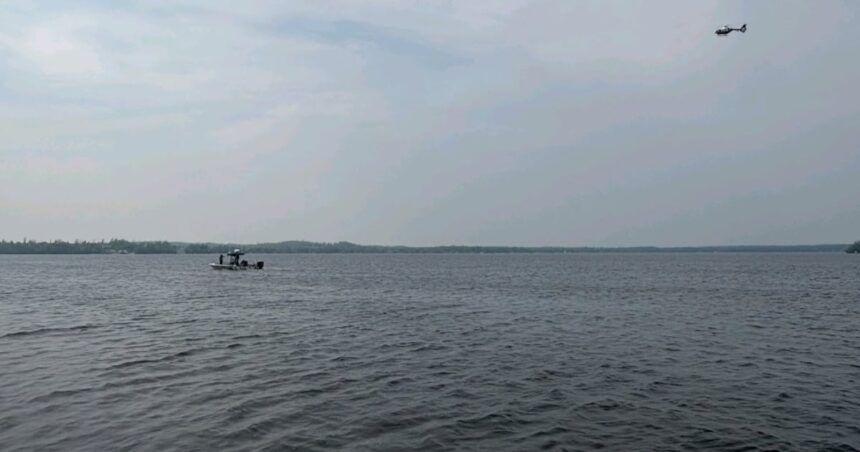The summer heat had finally broken that Monday evening when tragedy struck Sturgeon Lake, leaving a community in mourning and safety advocates calling for renewed vigilance on Ontario waterways.
Two men, ages 32 and 66, lost their lives when their pleasure craft struck a rocky shoal near McLaren’s Bay around 8:30 p.m. Ontario Provincial Police confirmed Tuesday morning. Both victims, whose names have not yet been released pending family notification, were pronounced dead at the scene despite rapid response from emergency services.
“This kind of loss hits close to home for everyone who enjoys our lakes,” said Constable Jennifer Reynolds of the Kawartha Lakes OPP detachment. “What should have been a pleasant evening on the water turned devastating in seconds.”
Local resident Tom Hutchinson, whose property overlooks the area where the accident occurred, described hearing “a terrible sound, like something slamming into rock,” followed by calls for help. Hutchinson immediately contacted emergency services while neighbors launched personal watercraft to assist.
The incident has reignited conversations about boating safety in the Kawartha Lakes region, particularly as unseasonably warm weather has extended the recreational boating season well into fall.
According to Transport Canada statistics, approximately 100 Canadians die annually in boating-related incidents, with nearly 40% of those fatalities occurring in Ontario waters. The data shows that navigation after dusk significantly increases risk factors, especially in areas with underwater hazards.
“While we don’t yet know all the contributing factors in this tragedy, we do know that visibility challenges at dusk create additional dangers,” explained Susan Rodriguez, director of the Ontario Safe Boating Association. “Local knowledge of waterways becomes crucial when daylight fades.”
Preliminary investigation suggests the vessel was traveling at considerable speed when it struck the submerged rocks, though OPP have not confirmed whether alcohol was involved. Weather conditions were favorable that evening, with calm waters and clear visibility reported by other boaters in the area.
McLaren’s Bay, part of the larger Sturgeon Lake near Bobcaygeon, is popular among both cottagers and day-trippers. The area features several unmarked underwater hazards that locals navigate by memory and experience – knowledge that seasonal visitors might lack.
“I’ve watched people fly through that passage countless times without realizing what’s just beneath the surface,” Hutchinson added. “The rocks are well-known to year-rounders, but if you’re unfamiliar with these waters, you’d never know they’re there.”
The impact threw both men from the vessel. Neither was wearing a life jacket when recovered, according to first responders on scene. This detail has particularly troubled safety advocates, as Transport Canada reports that 80% of boating fatalities involve victims not wearing proper flotation devices.
Kawartha Lakes Mayor Andy Letham expressed his condolences Tuesday morning. “Our waterways are central to life here, which makes accidents like this all the more heartbreaking,” Letham said. “My thoughts are with the families who received this terrible news.”
The OPP Marine Unit has impounded the damaged vessel for further investigation. Officers will examine the craft’s navigation equipment, structural integrity, and other factors that might have contributed to the accident.
Marina operator Sarah Johnston from nearby Bobcaygeon noted that late-season boating carries unique risks. “The water temperature has dropped significantly despite the warm air. Survival time after immersion is measured in minutes this time of year, not hours.”
Johnston has partnered with local authorities on water safety campaigns, including free navigation workshops for seasonal boaters. “Knowledge saves lives – understanding your surroundings, respecting weather conditions, and always wearing life jackets. These aren’t just suggestions; they’re essential practices.”
The tragedy has prompted Kawartha Conservation to review warning signage near known hazards throughout the lake system. “We’re examining whether additional markers might be warranted in certain high-risk areas,” explained watershed specialist Daniel Crawford. “Though we can’t mark every rock and shoal in these vast waterways, we can identify priority zones based on traffic patterns and accident history.”
For the tight-knit lakeside community, the accident has cast a shadow over the final weeks of boating season. Local businesses along the Trent-Severn Waterway, already preparing to wind down operations for winter, report subdued atmosphere among visitors.
“Everyone’s talking about it, checking if anyone knew the men involved,” said Rebecca Wilson, who operates a dockside café in Bobcaygeon. “There’s just this heaviness in the air. We’re all boaters here – it reminds us how quickly things can change on the water.”
The OPP investigation continues, with a full report expected in the coming weeks. Meanwhile, authorities urge all watercraft operators to exercise heightened caution, particularly during transitional seasons and low-light conditions.
“No matter how experienced you are on the water,” Constable Reynolds emphasized, “safety equipment and prudent navigation decisions remain your best protection against tragedy.”






